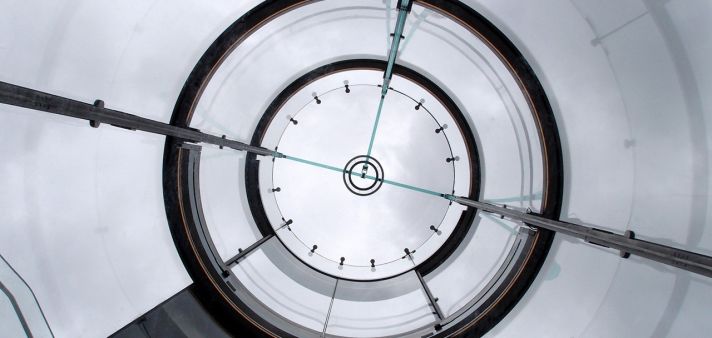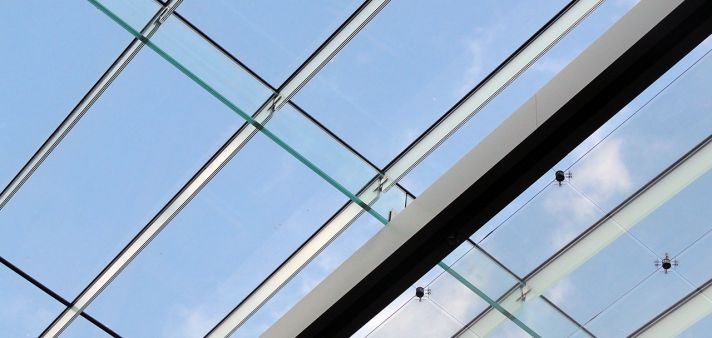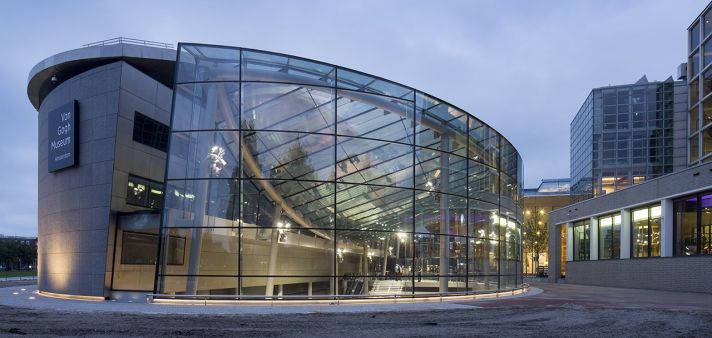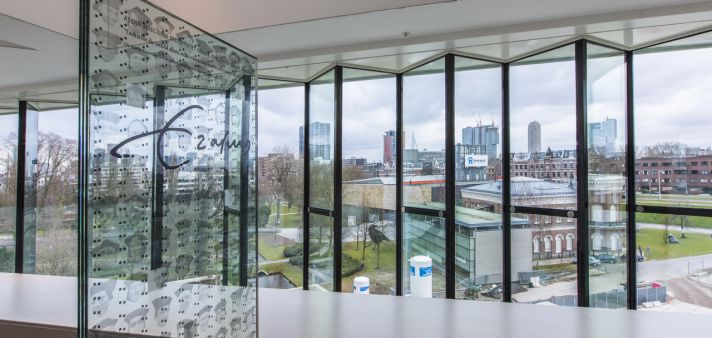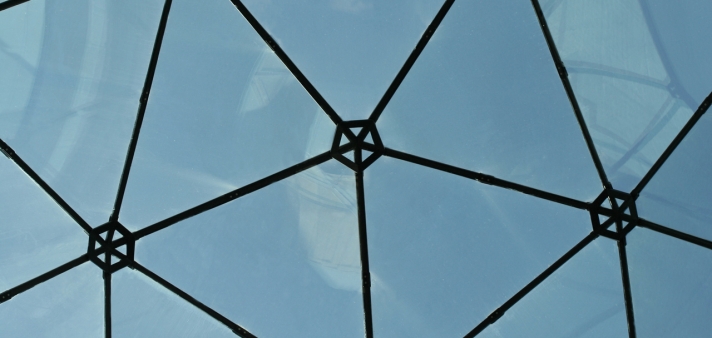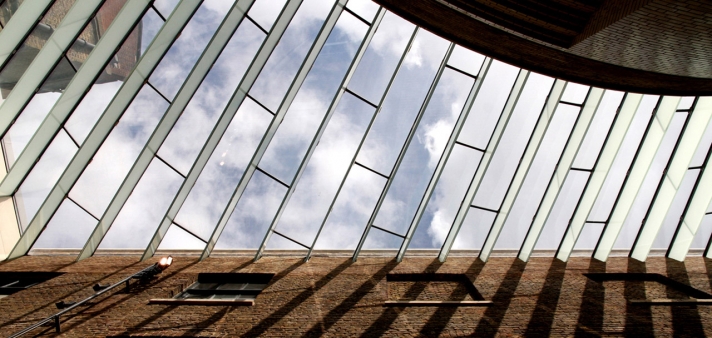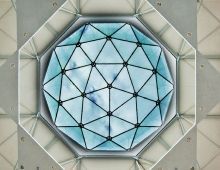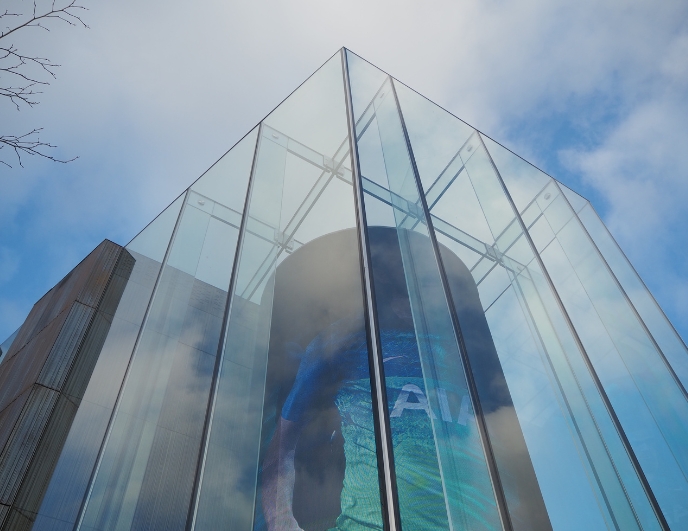Do you have innovative ideas, dreams or designs that are seemingly impossible? We are eager to solve your architectural challenges! Contact us so we can be of assistance.
All-glass
Glass can have all the compressive strength of concrete, provided the forces are appropriately applied to the glass surface. It makes glass extremely interesting as a structural material, but it does call for an absolute mastery of the associated theory and practice.
One useful property of glass is its capacity to take up compressive forces, but against that is its’ poor resistance to tensile force. Glass is brittle and may break without warning. The use of glass as a structural material therefore imposes high demands on the design. Still architects are choosing for fully transparent structures more and more. Glass fins are important elements to achieve this ambition.
The glass dome of the Selimiye Mosque in Haarlem was a major breakthrough in the structural use of glass. It is the first self-supporting glazed dome construction with no visible steel supporting structure. Pentagonal-shaped nodes fix the corners of the glass panels and are interconnected using tension rods in the joints. This results in the pre-stressing of the entire structure. Pre-tensioning prevents the occurrence of undesired tensile forces.
The Victoria & Albert Daylit Gallery Roof in London is the superlative in glazed construction. The supporting structure for the fully glass roof consists of glass fins build up of 3 layers of glass. A translucent interlayer is laminated between the layers of glass. The glass fins are up to 11 metres in length. As well as the complex structure of the fins, the form of the roof also presented major constructional challenges. The geometry of the adjacent roofs determined that a flat roof surface was not possible. The solution was to design a roof surface curved in two directions. The panels of the insulating glass were inserted into the supporting structure in their basic flat form, and then cold-bent with clamp-nodes to produce the required twisted shape.
The Victoria & Albert Museum project won the Structural Design of the Year Award at the World Architecture Festival 2010 in Barcelona: Recognition of its unique status as a structural application of glass.

